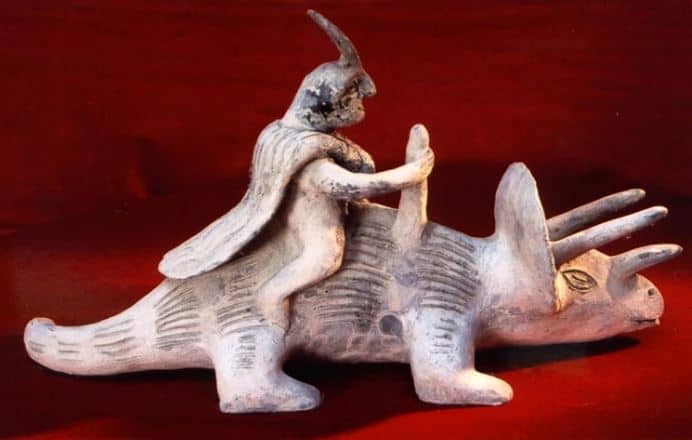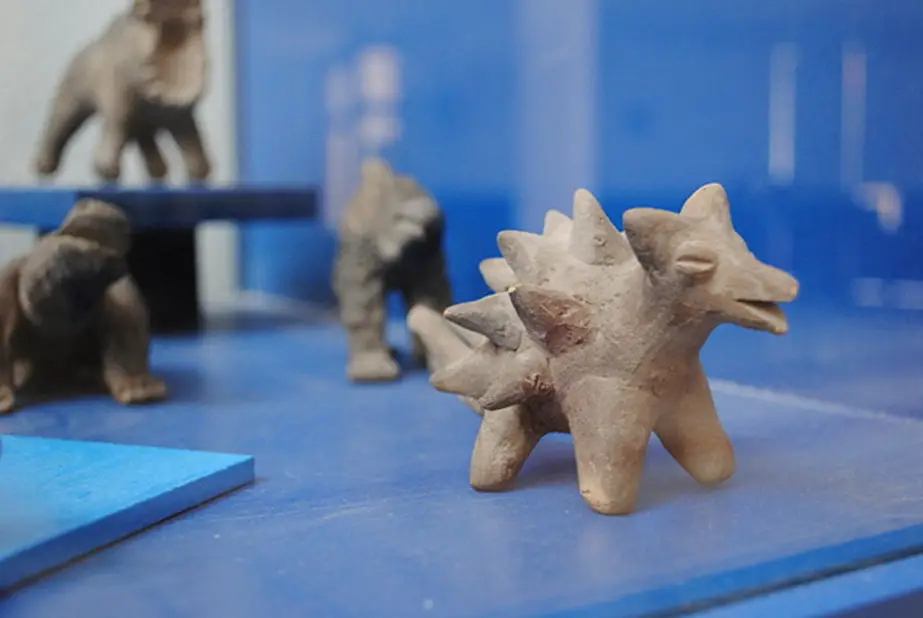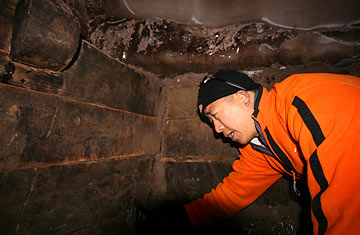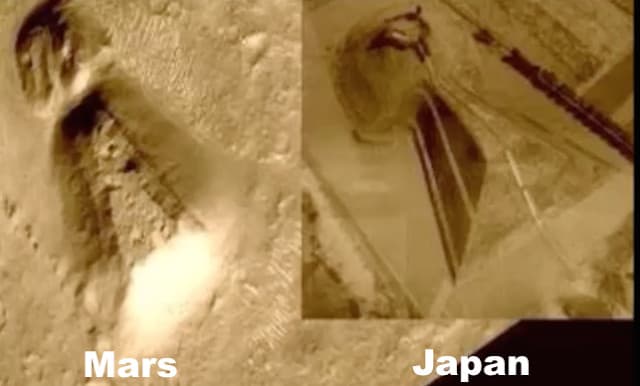

The Acambaro figurines are a collection of more than 32,000 pieces of strange looking figurines discovered in the municipality of Acambaro, Mexico. Some of these artifacts depict humans coexisting with dinosaurs.
Have you ever wondered if people on Earth coexisted with dinosaurs in the distant past? It is commonly accepted by mainstream scholars that Dinosaurs roamed the earth between 220 million and 65 million years ago during the Mesozoic Era.
Mankind –homosapiens specifically— appeared on Earth some 200,000 years ago. However, while this timeline is accepted in the scientific community, numerous discoveries point to a much different past, and that humanity and dinosaurs coexisted on Earth.
One of the most interesting examples are the strange Acambaro Figurines.
In 1944 Waldemar Julsrud, a German merchant made a clamorous discovery in Acambaro, a small Mexican town located less than 300 kilometers northwest of Mexico, in the province of Guanajuato.
While horse riding with one of his employees, a farmer named Odilon Tinajero, his attention was drawn to a piece of pottery that was protruding from the ground . It was a terracotta figurine which was unlike any others he had encountered in the past.
Julsrud ordered his employee to dig up and bring all the similar pieces he could find. A few days later, Tinajero appeared with dozens of strange artifacts.
Julsrud was stunned by the style and diversity of the figurines. He made a deal with his employee: he would pay Tinajero 1 peso for each intact artifact, and nothing for the broken figurines, even though he had to hand over those too.
He wanted to prevent anyone fabricating the figurines based on the ones he had Tinajero dig out.
The figurines were discovered in groups of 20 to 40 inside wells at a depth of around two meters below the surface.
However, the figurines were not located within funerary wells, since only 6 skulls were found during the excavations. According to Mr. Julsrud’s hypothesis, it seems that they had been buried in a hurry to avoid being plundered by the first Spanish settlers.
More than 33 500 objects (mostly made of ceramics), stone, jade, and obsidian were found. All are unique, and none have been duplicated.
Their size varies from a few centimeters to less than one meter. Several types of clays were used (their examination would give a valuable indication of their origin), and all were manufactured by the open fire method or pre-firing method.
Interestingly, just as Dr. Cabrera, the curator of the Ica stones, Mr. Julsrud never did business with his discovery. His aim was scientific, and his desire was to protect a heritage, which he considered unique to mankind.
Mr. Julsrud gladly showed the figurines to anyone who as interested in studying them, however, the scientific community refused to accept them as authentic, because of their curious depictions: They represent, among other things, dinosaurs, unknown animals, reptiles, some have avian characteristics. Interestingly, certain figurines even seem to indicate a form of domestication of small reptiles and dinosaurs, large-sized monkeys, and many represent unknown divinities.
But everyone knows that it’s impossible, and mankind and dinosaurs never coexisted… right?
However, not everyone refused to believe so. One researcher became interested in this discovery: Charles Hapgood, professor of history and anthropology at the University of New Hampshire.
He traveled to investigate, find and research the matter. On his trip, he brought several samples to analyze the artifacts based on the most modern and recent methods of the time (in the late 60’s).

Carbon-14 dating performed in 1968 by Isotopes Incorporated of New Jersey showed that the figurines date between 1100 and 4500 B.C.
In 1972, the thermoluminescence dating method by the University of Pennsylvania on 2 figurines placed the figurines to around 2,500 B.C.
Mainstream dogma states that dinosaurs –all of them— disappeared around 65 million years ago. But, why must have all dinosaurs disappeared from our planet while other species survived?
If we look back at history, we will find that we know of the existence of dinosaurs from just over two centuries.
It is therefore officially impossible for men who lived 3,000, 4,500 or even 6,500 years to have been able to describe and manufacture figurines representing animals that were discovered in Mexico.
This is precisely why many discoveries, like the one of Acambaro, are denied in spite of the evidence showing otherwise; because the discoveries do not fit with mainstream history.
In 1954, the Mexican government sent a team of archaeologists, led by Dr. Eduardo Noguerain, to investigate the site and excavate in another location, where other figurines were found.
They verified the authenticity of the site, saying what an incredible discovery Julsrud had made. However, 3 weeks later, in their report, they deny the authenticity of Julsrud’s figurines because they represent dinosaurs.
Authentic or not?
In 1952, archaeologist Charles DiPeso, affiliated with the Amerind Foundation of Arizona, visited the area, studied the collection and observed the excavators during his work. According to DiPeso, the surface of the figures shows evidenced that they were of recent manufacture, and did not show the usual characteristics of elements of objects that have remained buried for thousands of years; If they had been authentic relics, they would have been scratched and broken like the rest of artifacts found in that area of Mexico.
Some archaeologists have come forward saying that, if the Acambaro figures are genuine, then they might actually be representations of stylized non-saurian animals, or mythical monsters and not dinosaurs as many have claimed.
While it is possible that mankind did coexist in the distant past with dinosaurs, the discovery of the Acambaro figurines is not considered by mainstream scholars as the ultimate evidence that proves it.




